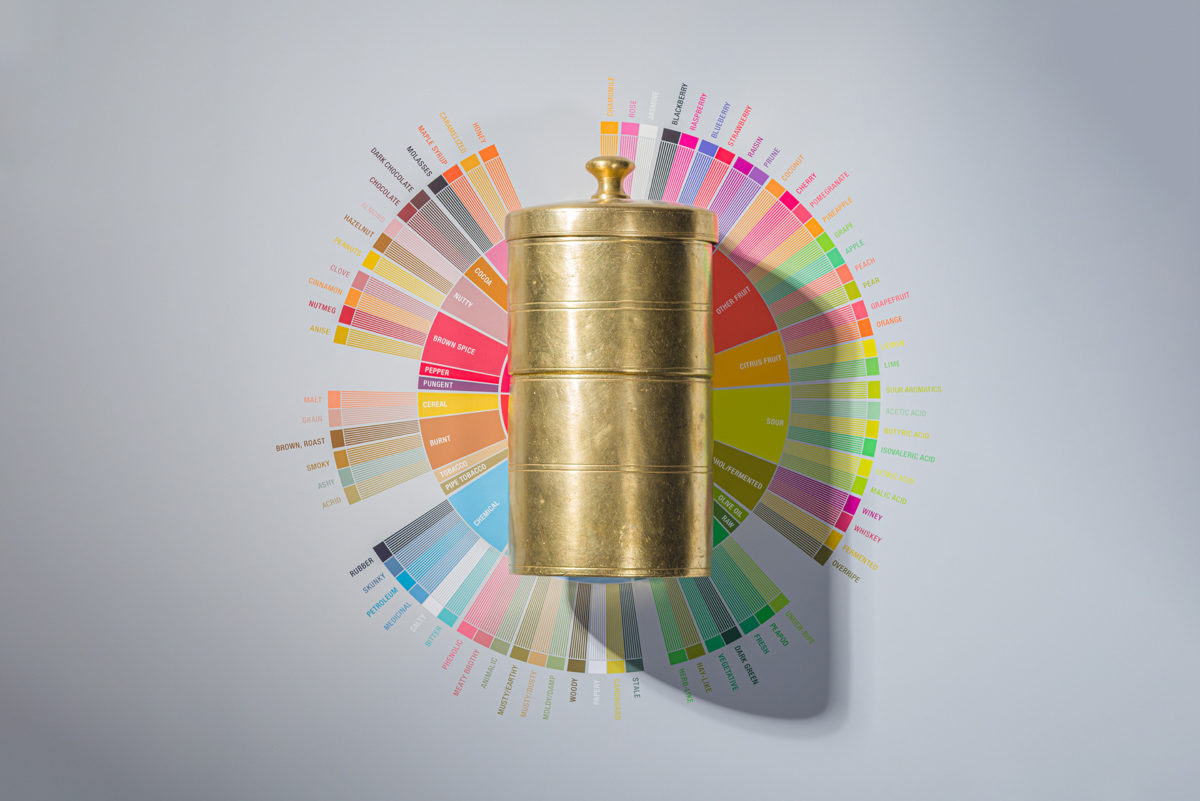Story: Namisha Parthasarathy
The entirety of India’s coffee history, growing and drinking, has been reductively summed up by one popular urban legend: the story of a Sufi saint, Baba Budan. Whilst documentation about the genesis of Indian coffee is sparse, even less is known about the inception of the filter kaapi—a food-grade stainless steel filter popularly used to create the steaming hot, frothy, milk-based coffee drink that goes by the same name. This piece is an attempt to recenter India’s coffee culture in the present age, viewed from the lens of specialty coffee and the brewers that go along with it.
What Is The South Indian Filter?
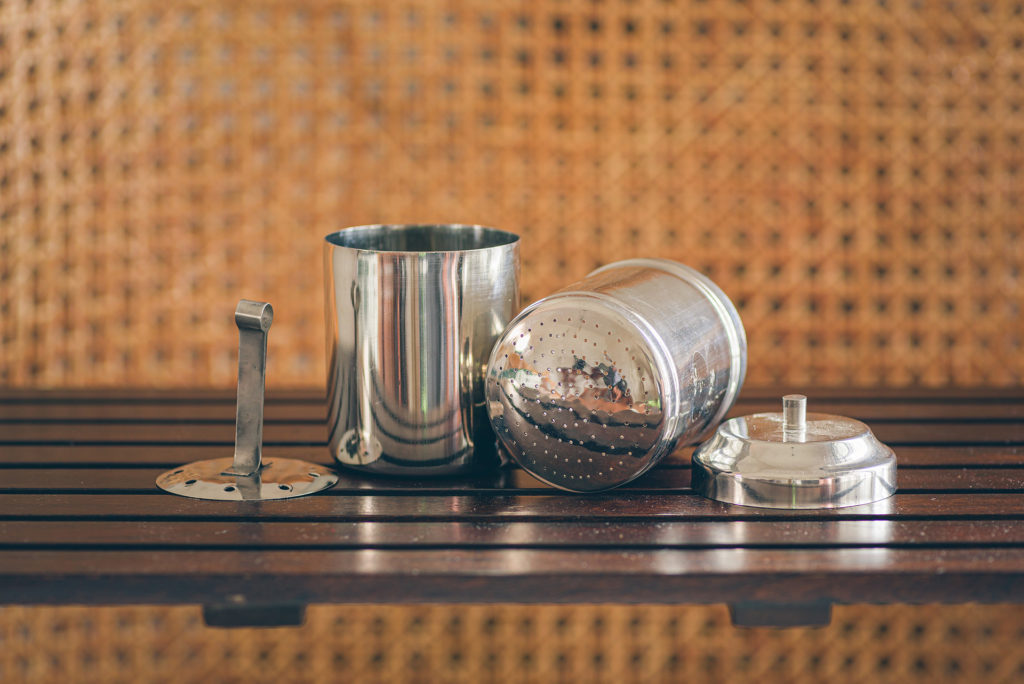
The South Indian filter, or just “filter” as it is known locally, is a three-part manual percolation brewing device consisting of a top chamber with holes, a bottom collection chamber, and a lid. Ironically, although this filter is found exclusively in India, and has little significance outside its borders, it has no name in any local language or dialect, and is instead ubiquitously known by its generic English name. Available in several sizes, its occurrence is largely confined to either South Indian households, which largely opt for 200–400 milliliters sizes, or darshinis, quick, self-serve restaurants that serve batch brewed filter kaapi.
The input variable is almost always pre-ground arabica and/or robusta blends, mixed in with chicory (sometimes forming a ratio as high as 50:50), and the relatively long brewing process of between 10–15 minutes yields a thick syrupy coffee concentrate, called decoction, which is routinely mixed in with boiling milk and generous amounts of sugar, to make kaapi. In this respect, the decoction is akin to espresso which also forms the base for several milk-based coffee drinks. Unlike the espresso, however, the decoction is rarely drunk alone. A simple explanation for this could be because of the quality of ingredients used; dark roasted, low grade, commodity coffee, blended in with chicory hardly makes for an enjoyable standalone drink.
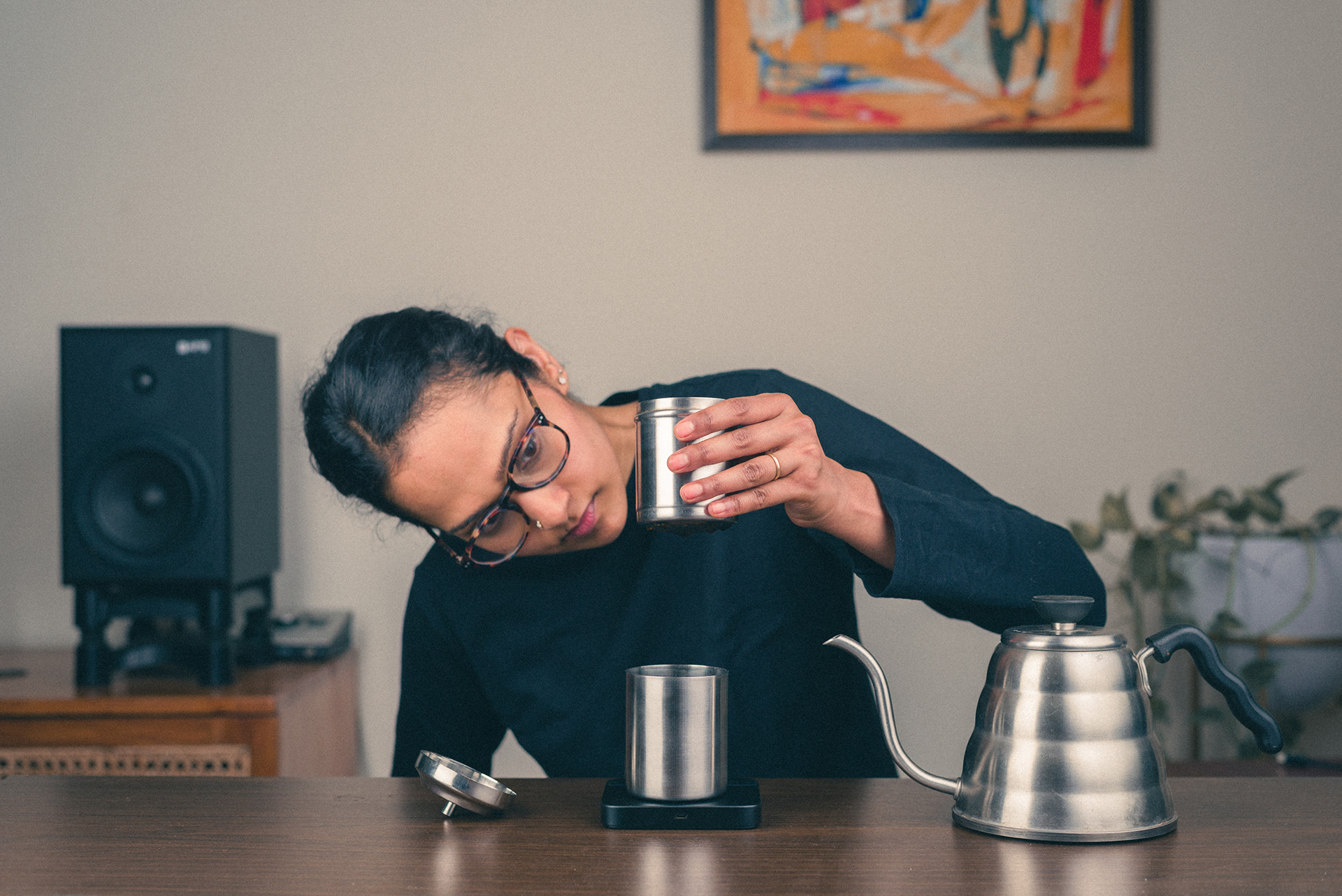
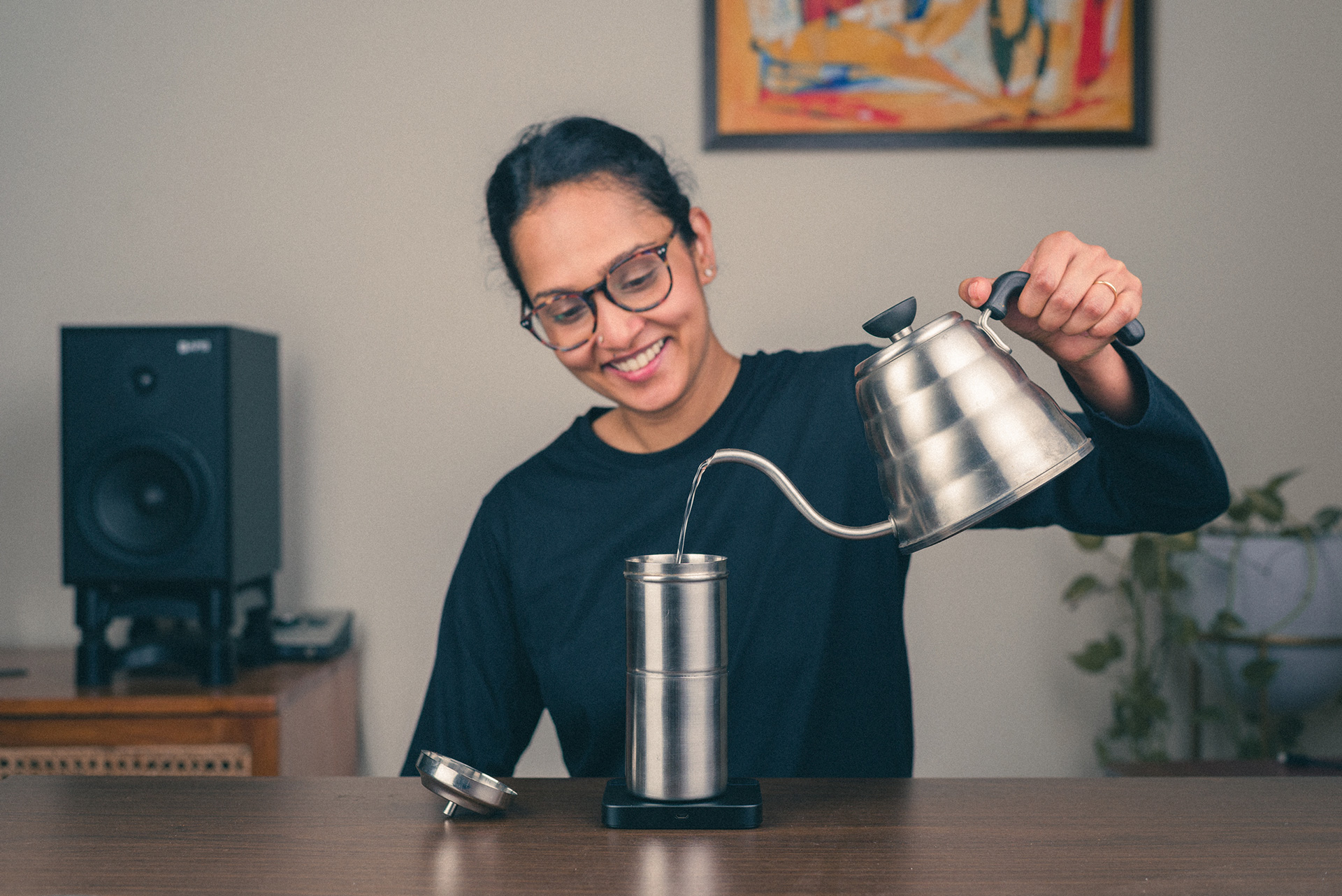
Interestingly, little distinction is made between the brewer and the resulting drink; the two often remain enmeshed with each other. This has meant that users of the South Indian filter are loath to change the quality of coffee they use for fear of the kaapi being modified beyond recognition. With the drink being outside the remit of specialty coffee, the brewer has been similarly left unmodified. However, espresso machines are not exclusively associated with just cappuccinos; equally the permutations of potential drinks with the South Indian filter are vast.
Can The South Indian Filter Go Hand In Hand With Specialty?
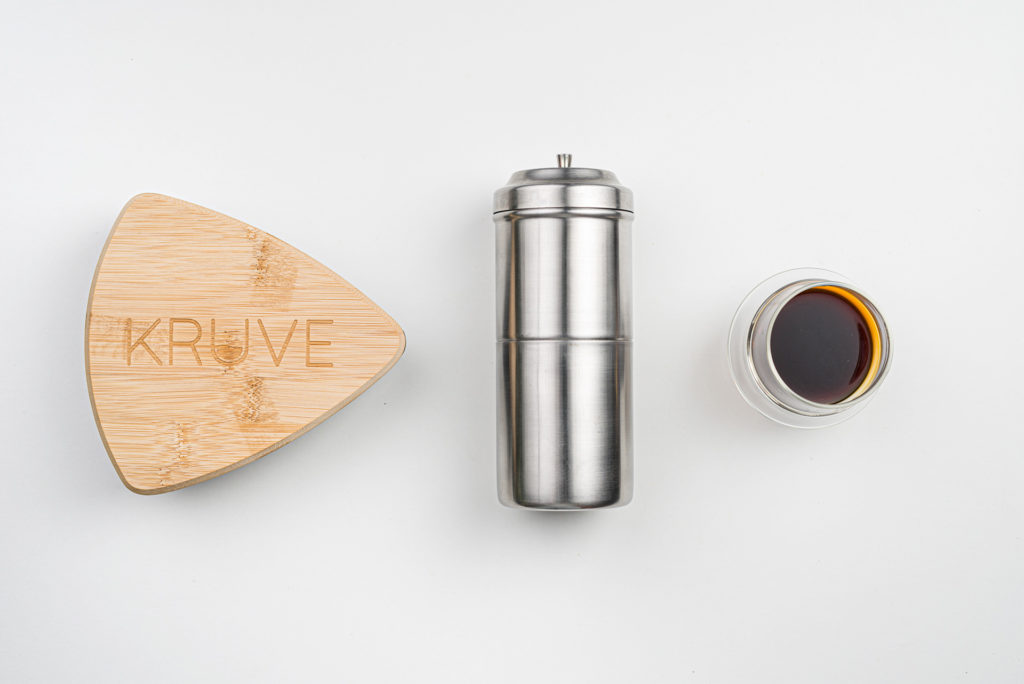
The South Indian filter is bursting with potential, and desperately overdue for an upgrade. Being lightweight, non-electric, and relatively compact, it is extremely portable. Found in either stainless steel or less frequently, brass, the materials used are sustainable. Unnecessary wastage is further minimized due to the absence of any additional materials such as paper filters.
The reason for this brewer slowly falling by the wayside is because it exists at the confluence of several cultural pushes and pulls. Domestically here in India, artisanal and specialty coffee is still extremely nascent, though COVID has spurred the rapid growth of independent roasters and home brewers alike. Frustrated by stringent lockdowns, millennials turned to online forums and YouTube channels to focus their attention on new hobbies such as coffee brewing. This exciting new world means India is in many ways playing catch up to a well established “third wave” elsewhere—cafes, roasters, their patrons, and home brewers are therefore titillated by popular brewers associated with modern coffee movements in the West in order to gain cultural capital and participate in large virtual communities unrestricted by geographical borders.
Additionally, the South Indian filter has been just that—a brewer restricted to Southern India because Indian coffee consumption culture has historically been concentrated where coffee is grown. With a new market of younger Indians in the north of India now trading in their chai for specialty coffee, the South Indian filter is likely as foreign to them as it is to Western consumers of coffee. This does not reflect an absence of interest, though.
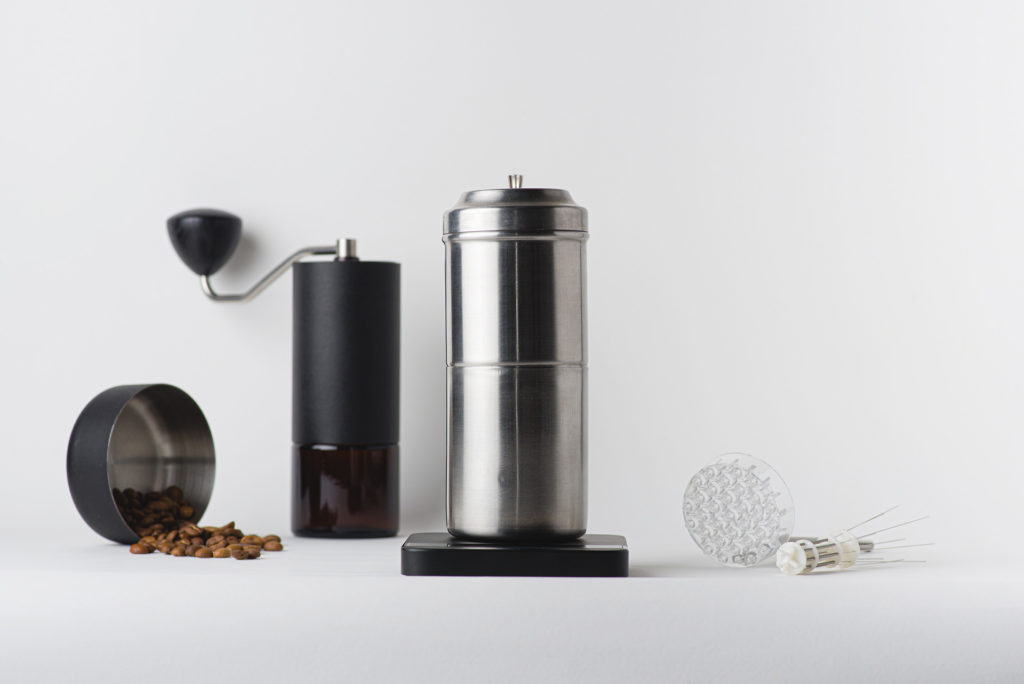
Internationally, the South Indian filter is almost entirely unknown. Indian cultural exports, long associated with ancient wisdom, the mystic and holistic, are romanticized in the West. With so little of this filter’s history being known and the absence of a compelling or exotic name, the makings of an appealing story to package have been absent. Sejal Sukhadwala notes a similar phenomenon about Indian food writing in Britain that “almost always gives a central role to those ‘heirloom family recipes’ handed down the generations from mother or grandmother.” Though this type of writing obviously has its place, boxing an entire culture into this brand of nostalgia doesn’t paint an accurate picture of the ground reality.
Being part of the diaspora in the Middle East, the United States, and Britain for most of my life, I found myself using the South Indian filter as a medium to satiate my yearning for connection to a homeland I left behind. I know I am not alone. Strictly viewing the South Indian filter through the lens of the vintage and traditional has unwittingly relegated it to a brewer of the past, one that can’t keep up with the modern era of specialty. Only after unexpectedly finding myself in India for longer than intended during COVID, did I refrain from placing such a heavy burden on such a little brewer, and start to see it for what it is: a no-nonsense brewer, and an excellent contender for those of us passionate about creating brewing rituals, absolutely making it relevant in the modern era of coffee.
Where To From Here?
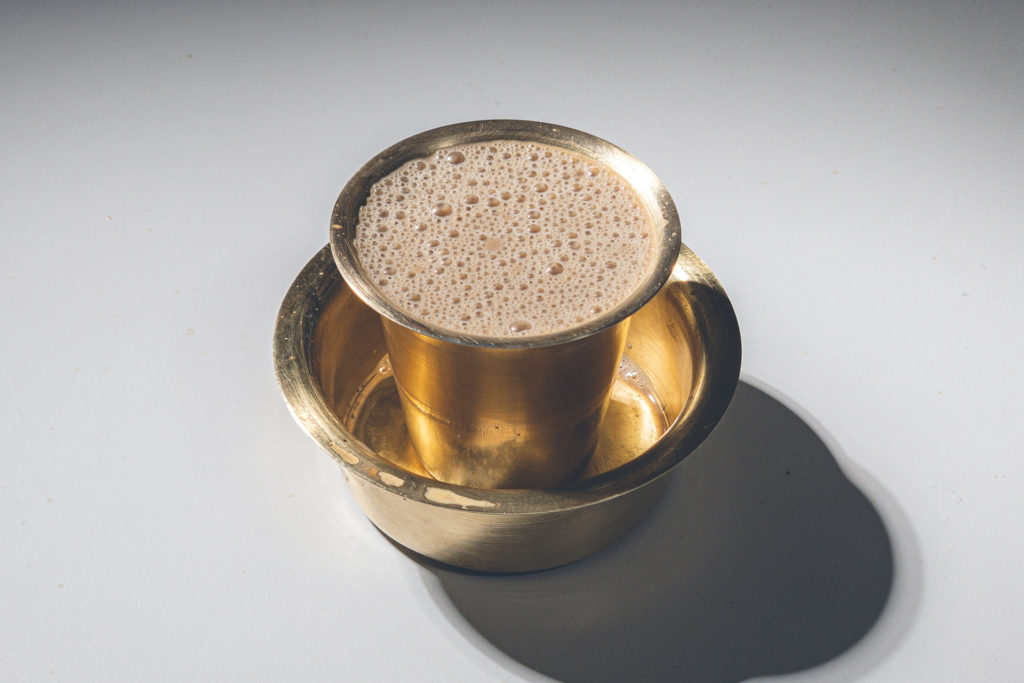
The rare combination of the ultra fine grind size and a slow percolation creates a unique flavor profile — one with mellow acidity, enhanced sweetness and bold flavors that are brought to the forefront. The metal filter creates a more full bodied brew, making the resulting decoction a perfect candidate to be paired with milk.
This traditional brewer is far from perfect, however. At least several decades old, it falls short of modern specialty requirements in a few ways: the holes could do with precision machining, sizes standardized, and materials and their alloys consistent, to ensure increased consistency between brews. These improvements are one-way Indian products can move past familiar tropes of being cheap and kitsch. Modernisation is important not only because producing countries like India can be at the forefront of coffee culture dialogues, but also because of everything specialty coffee inherently pursues: variance, diversity, and unique sensory experiences. With mainstream coffee culture increasingly extolling the virtues of manual brewing for holistic sensory experiences, minimizing waste, and ensuring you shouldn’t have to compromise on the quality of your cup even on the go, the South Indian filter can offer all of that to those willing to make a little space on their countertop for it.
Namisha Parthasarathy is the cofounder of ārāmse and freelance journalist based in Mysore, India. This is Namisha Parthasarathy’s first feature for Sprudge.
Photos by Raghunath Rajaram.
